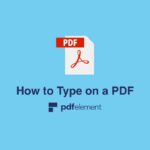
Document Translation Services in the United States: An In-depth Analysis
Introduction
In today’s globalized world, businesses and individuals are increasingly required to communicate across language barriers. Document translation services play a crucial role in facilitating this communication by enabling the translation of documents from one language to another. The US, being a hub for international trade and commerce, has a significant demand for document translation services. This article delves into the current landscape of document translation services in the US, examining industry trends, key players, pricing structures, and emerging technologies.
Market Overview
The US document translation services market is projected to reach a value of $12.4 billion by 2026, expanding at a compound annual growth rate (CAGR) of 6.2% from 2021 to 2026. This growth is attributed to factors such as increasing globalization, rising cross-border trade, and the growing adoption of digital transformation across industries.
Key Trends Shaping the Industry
- Globalization and International Trade: The rise of globalization has led to increased demand for document translation services to facilitate communication between businesses and customers across borders.
- Digital Transformation: Digital transformation and the adoption of cloud-based technologies have revolutionized the way document translation services are delivered, enabling faster and more efficient translation processes.
- Technology Advancements: Advancements in machine translation (MT) technology, such as neural machine translation (NMT), have improved the accuracy and quality of machine-translated content.
- Language Diversity: The US is home to a diverse population speaking various languages, leading to a growing demand for translation services that cater to specific language pairs.
- Regulatory Compliance: Stringent regulatory requirements in various industries, such as healthcare and finance, have increased the need for accurate and reliable document translation services.
Industry Players
The US document translation services market is characterized by the presence of both established multinational companies and specialized translation agencies. Some of the leading players in the industry include:
- Lionbridge: A global provider of language translation and localization services, offering a wide range of solutions for businesses and industries.
- TransPerfect: A leading provider of language translation and interpretation services, serving clients in diverse industries across the world.
- SDL (RWS): A global provider of language technology and translation services, offering solutions for enterprise clients in various sectors.
- Moravia: A specialized translation company focused on technical and scientific translations, serving clients in industries such as engineering, manufacturing, and healthcare.
Pricing Structures
Pricing models for document translation services vary based on several factors, including the language pair, document complexity, volume of content, and turnaround time. Common pricing structures include:
- Per-word Pricing: This is the most straightforward pricing model, where translators charge a fixed rate per word of the source text to be translated.
- Per-page Pricing: In this model, translators charge a fixed rate for each page of the translated document, regardless of the number of words.
- Hourly Pricing: Some translators charge an hourly rate for their services, particularly for complex or specialized translations.
- Project-based Pricing: For large or complex translation projects, translators may offer project-based pricing, where they charge a fixed fee for the entire project.
Emerging Technologies
Advancements in technology are transforming the document translation services industry. Some notable emerging technologies include:
- Machine Translation (MT): MT technology utilizes AI and statistical models to translate text without human intervention. While MT is still imperfect, it offers quick and cost-effective solutions for basic translations.
- Neural Machine Translation (NMT): NMT is an advanced form of MT that uses neural networks to learn and translate text, resulting in improved accuracy and fluency in translations.
- Translation Memory (TM): TM technology stores previously translated segments of text and reuses them when similar content is encountered in future translations, improving efficiency and consistency.
- Computer-Assisted Translation (CAT) Tools: CAT tools provide translators with various features to streamline the translation process, including machine translation integration, terminology management, and quality assurance.
Challenges and Opportunities
The document translation services industry faces several challenges and opportunities:
- Data Security and Privacy: Ensuring the security and privacy of sensitive data is a crucial challenge for translation service providers, especially when dealing with confidential or legally binding documents.
- Meeting Regulatory Requirements: The need to comply with stringent regulatory requirements in various industries places additional pressure on translation service providers to deliver accurate and compliant translations.
- Quality Control: Maintaining consistently high-quality translations remains a challenge, especially when dealing with complex or specialized content.
- Technological Disruption: The rapid evolution of translation technologies, such as MT and NMT, presents both opportunities and challenges for translation service providers to adapt and stay competitive.
- Global Expansion: Expanding into new geographic markets with diverse language requirements can be an opportunity for translation service providers to grow their business.
Conclusion
The document translation services market in the US is poised for continued growth as businesses and




